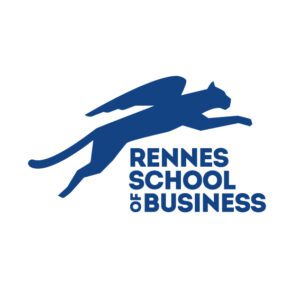Les étudiants déposent un travail, évaluent ceux des autres et évaluent la qualité des feedbacks reçus pour comprendre l’effet procuré par un feedback de bonne et de mauvaise qualité. Ils reçoivent également une note d’évaluateur.
💡 Sélectionnez le modèle dans ChallengeMe pour lancer cette activité en un clic !
L’objectif principal est de développer les compétences des étudiants en matière de feedback, tant dans la formulation que dans la réception, afin d’améliorer leur capacité d’auto-évaluation et leur esprit critique.
Développement de compétences critiques – Les étudiants apprennent à analyser objectivement le travail de leurs pairs et à formuler des commentaires constructifs.
Amélioration de la réceptivité au feedback – En évaluant la qualité des feedbacks reçus, les étudiants deviennent plus ouverts et réceptifs aux critiques constructives.
Renforcement de l’auto-évaluation – L’expérience de donner et recevoir du feedback améliore la capacité des étudiants à évaluer leur propre travail.
Préparation au monde professionnel – Les étudiants développent des compétences essentielles en communication et en collaboration, utiles dans leur future carrière.
Amélioration de la qualité des travaux – La pratique régulière du feedback conduit à une amélioration générale de la qualité des travaux produits.
Développement de l’empathie – Les étudiants apprennent à formuler des critiques de manière bienveillante et à comprendre différents points de vue.
💡 Sélectionnez la collection de critères associé à ce cas d’usage dans la plateforme
Les étudiants déposent leurs travaux sur la plateforme en suivant les consignes définies par l’enseignant.
Les étudiants ou enseignants évaluent les travaux en utilisant les critères d’évaluation définis par l’enseignant.
Ils peuvent également donner leurs feedbacks.
Les étudiants évaluent les membres de leur groupe en utilisant les critères d’évaluation définis par l’enseignant.
Ils peuvent également donner leurs feedbacks.
Les étudiants indiquent, à travers différents critères, s’ils ont trouvé les retours pertinents ou non.
Ils peuvent également fournir un commentaire écrit à leurs correcteurs
Les étudiants découvrent les évaluations et feedbacks reçus en fonction des options d’affichages définies.
Choisissez la méthode d’évaluation qui vous convient le plus.
Vous pouvez utiliser une activité « simple » ou ajouter des phases de dépôts ou d’évaluation supplémentaires.
Pourquoi ne pas utiliser notre assistant IA pour guider les étudiants dans leur feedback. L’assistant peut leur donner des éléments pour améliorer leur feedback et le rendre plus constructif.
Cette approche permet aux étudiants de développer des compétences essentielles en communication et en évaluation, tout en améliorant leur capacité à recevoir et à utiliser efficacement les feedbacks dans leur apprentissage et leur développement personnel.
1. Établir des lignes directrices claires – Fournissez aux étudiants des critères spécifiques pour donner un feedback constructif et bienveillant.
2. Modéliser le processus – Démontrez comment donner et recevoir un feedback efficace avant de demander aux étudiants de le faire.
3. Créer un environnement sûr – Établissez une atmosphère de confiance et de respect mutuel pour que les étudiants se sentent à l’aise pour partager leurs opinions.
4. Encourager la spécificité – Apprenez aux étudiants à fournir des exemples concrets et des suggestions d’amélioration dans leurs feedbacks.
5. Enseigner la réception du feedback – Guidez les étudiants sur la façon d’interpréter et d’utiliser constructivement le feedback reçu.
6. Pratiquer régulièrement – Intégrez des exercices de feedback dans diverses activités tout au long du cours pour renforcer ces compétences.
7. Réfléchir sur le processus – Encouragez les étudiants à réfléchir sur leur expérience de donner et recevoir du feedback pour améliorer continuellement leurs compétences.
8. Valoriser l’amélioration – Reconnaissez et récompensez les progrès des étudiants dans leurs compétences de feedback au fil du temps.









ChallengeMe propose des critères d’évaluation clairs et précis que vous pouvez personnaliser. En outre, l’anonymat des évaluations et la possibilité d’avoir plusieurs évaluateurs par travail aident à garantir l’équité.
Nous recommandons également de préparer les étudiants, de leur expliquer les objectifs, voir de coconstruire avec eux la grille critériée en prenant exemples sur d’anciens travaux.
Absolument, le travail de groupe est possible, aussi bien en phase de réponses (dépôt d’un fichier en groupe par exemple) que en phase d’évaluation (les étudiants doivent se mettre d’accord sur le feedback et les évaluations)
Nous avons plusieurs contenus disponibles. Dans la plateforme, les étudiants sont accompagnés sur l’activité avec des conseils pour donner des feedback pertinents. Nous mettons aussi à disposition des enseignants des documents qu’ils peuvent utiliser pour présenter l’activité aux étudiants.
Vous choisissez ! Vous pouvez mettre en place du formatif uniquement (pas de notes, uniquement des feedback) ou bien construire une note avec de la pondération sur les critères, des bonus/malus selon certains événements (retard par exemple) ou encore pondérer la note de l’évaluation par les pairs avec celle de l’enseignant.
Nous travaillons avec + de 90 écoles en France, Suisse, Belgique et au Québec. Vous trouverez sur notre site plusieurs retours d’expériences d’autres écoles sur nos activités.






Nous vous proposons d’essayer gratuitement ChallengeMe. N’hésitez pas à nous contacter directement pour toutes vos questions, notre équipe sera ravie de vous aider !